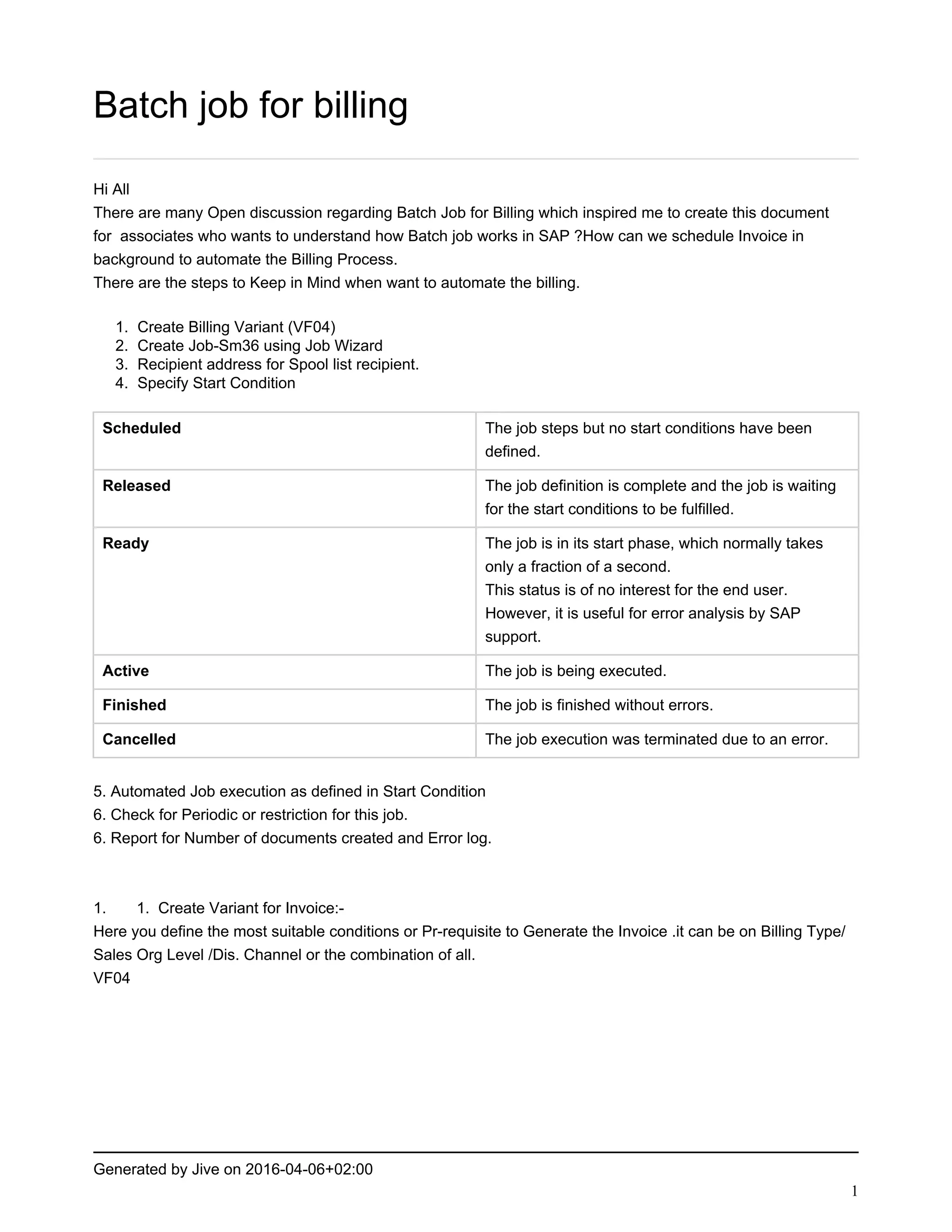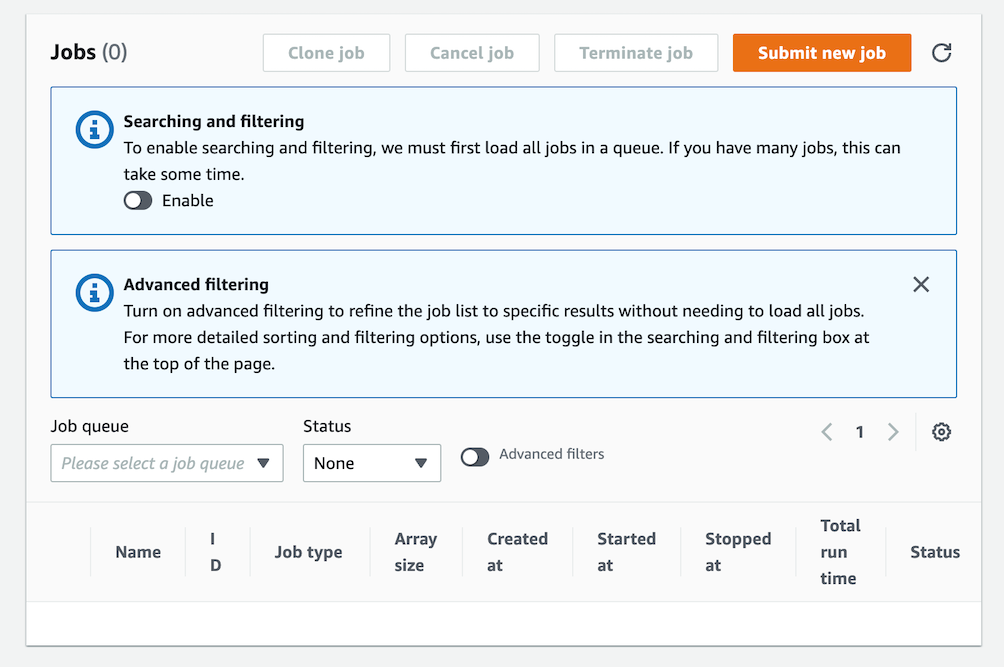So, you're diving into the world of RemoteIoT batch job examples, huh? This is where the magic happens in the tech universe. Imagine this: your devices scattered across the globe, connected through invisible threads of data, and you're orchestrating them from the comfort of your desk. RemoteIoT batch jobs are like the secret sauce that makes this possible. In this guide, we'll explore how these jobs work, why they matter, and how you can leverage them for your projects. Let's get started, shall we?
Batch jobs are not just some fancy buzzword in the tech world. They're the backbone of many automated processes that power IoT ecosystems. From scheduling tasks to managing data flows, RemoteIoT batch jobs help streamline operations and boost efficiency. If you're new to this concept, don't worry—we've got you covered. This article is designed to break down the complexities and make it digestible for everyone.
Before we dive deeper, let's set the stage. Think about IoT as a giant network of devices communicating with each other. Now, imagine you're the conductor of this orchestra, and batch jobs are your baton. With the right RemoteIoT batch job example, you can automate repetitive tasks, optimize resource usage, and ensure everything runs smoothly. Stick around, and you'll learn how to master this powerful tool.
What Exactly is RemoteIoT Batch Job Example?
Alright, let's get into the nitty-gritty. A RemoteIoT batch job example is essentially a blueprint for executing a series of tasks in bulk. These jobs are designed to handle repetitive operations without requiring constant human intervention. Picture this: you've got hundreds of IoT devices collecting data, and you need to process that data efficiently. A batch job can automate the entire process, saving you time and effort.
RemoteIoT batch jobs are especially useful for managing large-scale IoT deployments. Whether you're dealing with sensor data, device updates, or firmware upgrades, these jobs ensure everything is done systematically. They're like the unsung heroes of the IoT world, working behind the scenes to keep things running smoothly.
Why RemoteIoT Batch Jobs Matter
Here's the deal: IoT ecosystems are growing rapidly, and managing them manually just isn't feasible. That's where RemoteIoT batch jobs come in. They offer several advantages:
- Automation: Automate routine tasks and focus on more critical aspects of your project.
- Scalability: Handle large-scale deployments with ease, ensuring consistency across all devices.
- Efficiency: Optimize resource usage and reduce operational costs.
- Reliability: Ensure tasks are executed accurately and on time, minimizing errors.
In a world where time is money, RemoteIoT batch jobs are a game-changer. They allow you to scale your operations while maintaining control over every aspect of your IoT ecosystem.
Setting Up Your First RemoteIoT Batch Job
Now that you understand the basics, let's talk about setting up your first RemoteIoT batch job. It's easier than you think, especially with the right tools and resources. Here's a step-by-step guide to get you started:
Step 1: Define Your Requirements
Before diving into the technical details, take a moment to define what you need. Ask yourself:
- What tasks do I want to automate?
- How frequently do these tasks need to run?
- What resources are required to execute these tasks?
Having a clear understanding of your requirements will make the setup process smoother and more efficient.
Step 2: Choose the Right Tools
There are several tools and platforms available for managing RemoteIoT batch jobs. Some popular options include:
- AWS IoT: Offers robust features for managing IoT devices and automating tasks.
- Microsoft Azure IoT: Provides a comprehensive suite of tools for IoT development and management.
- Google Cloud IoT: Ideal for large-scale deployments and real-time data processing.
Choose a platform that aligns with your project requirements and technical expertise.
Step 3: Write Your Batch Job Script
Once you've defined your requirements and chosen your tools, it's time to write your batch job script. This script will define the tasks to be executed and the conditions under which they should run. Here's a simple example:
Let's say you're managing a network of temperature sensors. Your batch job might look something like this:
1. Collect data from all sensors every 15 minutes.
2. Analyze the data to identify anomalies.
3. Send alerts if any anomalies are detected.
By writing a clear and concise script, you ensure your batch job runs smoothly and achieves the desired results.
Exploring Real-World RemoteIoT Batch Job Examples
Nothing beats learning from real-world examples. Let's take a look at how RemoteIoT batch jobs are being used in various industries:
Example 1: Smart Agriculture
In the agriculture sector, IoT devices are used to monitor soil moisture, temperature, and other environmental factors. A RemoteIoT batch job can automate the collection and analysis of this data, helping farmers make informed decisions about irrigation and fertilization.
Example 2: Smart Cities
Smart cities rely on IoT devices to monitor traffic patterns, energy consumption, and public safety. Batch jobs can be used to analyze this data and generate insights that improve urban planning and resource management.
Example 3: Industrial IoT
In manufacturing, IoT devices are used to monitor equipment performance and predict maintenance needs. Batch jobs can automate the collection of diagnostic data and trigger maintenance alerts when necessary.
These examples highlight the versatility and power of RemoteIoT batch jobs in different industries. By leveraging these tools, organizations can achieve greater efficiency and productivity.
Best Practices for RemoteIoT Batch Job Implementation
Implementing RemoteIoT batch jobs requires careful planning and execution. Here are some best practices to keep in mind:
1. Start Small
Don't try to automate everything at once. Start with a small pilot project to test your batch job setup and refine it as needed.
2. Monitor Performance
Regularly monitor the performance of your batch jobs to ensure they're running as expected. Use analytics tools to track key metrics and identify areas for improvement.
3. Optimize Resource Usage
Make sure your batch jobs are optimized for resource usage. Avoid overloading your system with unnecessary tasks and ensure proper scheduling to minimize conflicts.
By following these best practices, you can ensure your RemoteIoT batch jobs are effective and efficient.
Common Challenges and How to Overcome Them
Like any technology, RemoteIoT batch jobs come with their own set of challenges. Here are some common issues and how to address them:
Challenge 1: Scalability
As your IoT ecosystem grows, managing batch jobs can become more complex. To address this, consider using cloud-based platforms that offer scalable solutions for managing large-scale deployments.
Challenge 2: Security
Security is a top concern when dealing with IoT devices. Ensure your batch jobs are secure by implementing proper authentication and encryption protocols.
Challenge 3: Data Management
Handling large volumes of data can be overwhelming. Use data management tools to organize and analyze your data effectively, ensuring your batch jobs run smoothly.
By addressing these challenges head-on, you can ensure your RemoteIoT batch jobs are successful and sustainable.
Future Trends in RemoteIoT Batch Jobs
The world of IoT is constantly evolving, and so are the tools and technologies used to manage it. Here are some future trends to watch out for:
Trend 1: Edge Computing
Edge computing is gaining popularity in the IoT world. By processing data closer to the source, edge computing reduces latency and improves performance. RemoteIoT batch jobs can benefit from this trend by leveraging edge computing capabilities.
Trend 2: Artificial Intelligence
AI is revolutionizing the way we interact with IoT devices. By integrating AI into your batch jobs, you can achieve greater automation and intelligence in your IoT ecosystem.
Trend 3: 5G Connectivity
The rollout of 5G networks is set to transform the IoT landscape. With faster speeds and lower latency, 5G will enable more efficient and reliable RemoteIoT batch jobs.
Staying ahead of these trends will help you stay competitive and innovative in the IoT space.
Conclusion: Take Action Today
RemoteIoT batch jobs are a powerful tool for managing IoT ecosystems. By automating routine tasks and optimizing resource usage, they help you achieve greater efficiency and productivity. This guide has provided you with the knowledge and tools to get started with RemoteIoT batch jobs. Now it's your turn to take action.
Whether you're a tech enthusiast, a business owner, or a developer, RemoteIoT batch jobs have something to offer. Start exploring the possibilities today, and see how they can transform your IoT projects. Don't forget to share your thoughts and experiences in the comments below. Let's keep the conversation going!
Table of Contents
- What Exactly is RemoteIoT Batch Job Example?
- Why RemoteIoT Batch Jobs Matter
- Setting Up Your First RemoteIoT Batch Job
- Exploring Real-World RemoteIoT Batch Job Examples
- Best Practices for RemoteIoT Batch Job Implementation
- Common Challenges and How to Overcome Them
- Future Trends in RemoteIoT Batch Jobs
- Conclusion: Take Action Today


